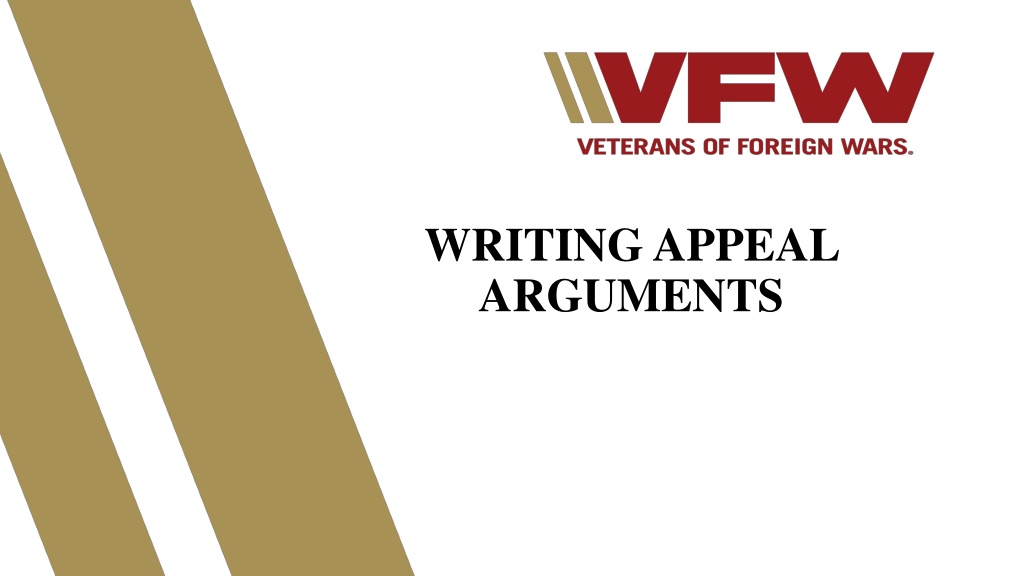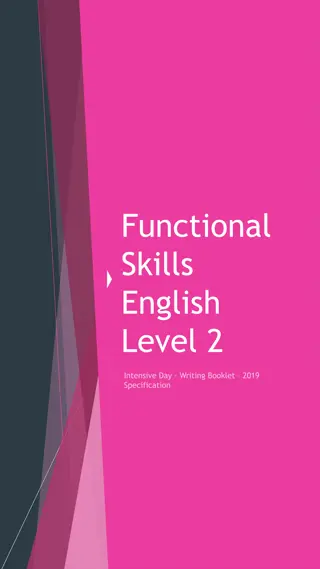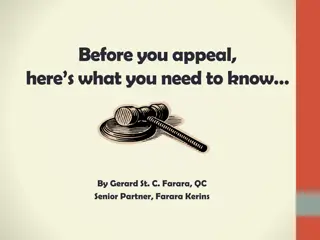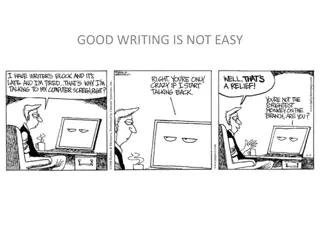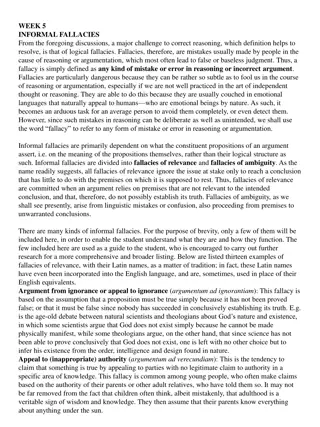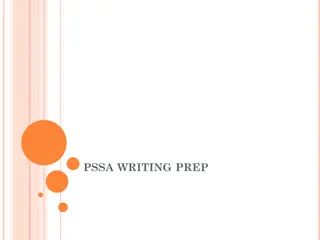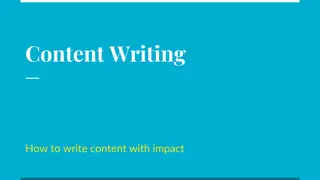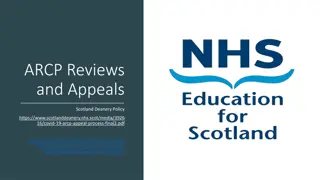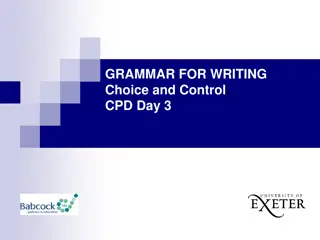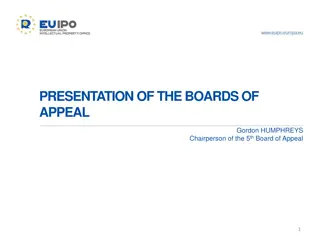Mastering Appeal Writing Methods
Learn how to effectively utilize the IRAC method when writing appeal arguments, including identifying issues, listing rules, analyzing facts, and concluding with desired outcomes. Discover essential tips for writing persuasively and clearly, ensuring your appeal arguments are compelling and well-structured. Prepare comprehensive appeal arguments covering key aspects such as the issues on appeal, VA errors, appellant's desires, and desired VA actions for successful appeals.
Download Presentation

Please find below an Image/Link to download the presentation.
The content on the website is provided AS IS for your information and personal use only. It may not be sold, licensed, or shared on other websites without obtaining consent from the author.If you encounter any issues during the download, it is possible that the publisher has removed the file from their server.
You are allowed to download the files provided on this website for personal or commercial use, subject to the condition that they are used lawfully. All files are the property of their respective owners.
The content on the website is provided AS IS for your information and personal use only. It may not be sold, licensed, or shared on other websites without obtaining consent from the author.
E N D
Presentation Transcript
WRITING APPEAL ARGUMENTS
LESSON OBJECTIVES Learn how to use the appeal writing method: IRAC Identifying the Issue(s): rewrite and recognize Listing the rules Analyzing the facts Concluding with the desired outcome Review tips on writing clearly and persuasively 2
BEFORE WE BEGIN An appeal argument should clearly list the following: The issue on appeal What the VA did wrong or failed to do in making their decision, citing objective evidence to support your argument What will satisfy the appellant (what does he/she want) What does the appellant want VA to do? **If possible, limit argument to 2-3 paragraphs for each issue 3
BEFORE WE BEGIN All appeals should be accompanied by an appeals argument prepared by the representative. This includes: Supplemental Claims (21-0995) Higher Level Review (21-0996) Appeals to the BVA (10182) *Remember there is a difference between argument and evidence 4
BEFORE WE BEGIN WRITING Prior to writing an appeals argument, you must review the claims file to determine: The reason why the benefit was denied What evidence/action is needed to grant the benefit 5
BEFORE WE BEGIN WRITING Kendall Johnstone was recently granted a 0% service-connected rating for headaches. She wants to appeal the rating. The rating decision states the following: We have assigned a noncompensable evaluation for your headaches based on: With less frequent attacks A higher evaluation of 10 percent is not warranted unless there are characteristic prostrating attacks averaging one in 2 months over the last several months. Why was the benefit (increased rating) denied? What evidence/action is needed to grant the benefit? 6
IRAC APPEAL WRITING METHOD IRAC stands for: Issue Rule Analysis Conclusion Though this method is not mandatory, it will help keep your argument organized 7
IDENTIFYING THE ISSUE Locate the rating decision that addresses the veteran s issue The issue is already presented to you in a numbered list in the decision being appealed and is phrased in terms of entitlement to the issue The rating decision will also include the reasons for the denial Why are the reasons for denial important? 8
IDENTIFYING THE ISSUE Some of the most overlooked/misstated issues are: Earlier effective date of a rating vs increased rating or earlier effective date for service connection Example: Veteran appeals 50% rating for PTSD. Is awarded 70% rating after 3 years in appeals, but only as of exam date. Continues appeal asking not for 100%, but earlier date of 70% rating. Separate ratings vs increased ratings Example: you cannot receive a rating higher than 40% under the diagnostic code for a certain condition based on limitation of motion, but you also have neuropathy that should be rated under another diagnostic code Disagreement with the creation of an overpayment vs Request for a waiver of an overpayment You may have both issues in an appeal, but they are very different arguments: the fact that you never owed anything v. telling VA it was not your fault/you have a hardship so you should not have to pay 9
RECOGNIZING THE RULE(S) Same types of claims will typically use the same rules, some of which will be stated in the rating decision However, there are many exceptions in veterans' law, which the rating decision may leave out After identifying the issue, you can either: Start with the facts, and match up which rules apply to those facts, or Start with every possible rule, and see if the facts support that rule 10
STARTING WITH THE RULE Issue is entitlement to compensation with aid and attendance. Veteran is service connected at 100% for loss of use of the arm, hypertension, and erectile dysfunction. The rules are: Veteran must need aid and attendance of another person For at least two activities of daily living Due solely to service-connected conditions And the rating for compensation purposes generally needs to be at least 100% Now we can review the rating decision and the claims file to see which rules VA thought the veteran did not meet, based on the evidence presented. 11
STARTING WITH THE FACTS If the rating decision does not tell you a lot, starting with the facts may be easier Issue is service connection for a right shoulder joint condition denied due to no event in service. Facts: Veteran claims he injured his shoulder during combat mission in Afghanistan. Post-deployment health assessment shows complaint of upper extremity problem after deployment. Veteran was activated Guard member and did not have a separation physical. Right shoulder arthritis diagnosed 10 months post service. 12
STARTING WITH THE FACTS In this example, the facts lead you to the rules: Combat veteran presumption can apply and presume event in service (38 CFR 3.304) While STRs do not show diagnosis/injury, post-deployment assessment is consistent with veteran s complaints Arthritis was diagnosed within one year of veteran s release from active duty. If veteran had at least 90 days continuous active service, chronic condition presumptive rule should apply to show nexus (38 CFR 3.307 & 3.309(a)) 13
NON-MERITORIOUS APPEALS A non-meritorious appeal fails to meet the necessary criteria for a grant no way to argue or change the facts. Examples: Pension when the veteran has no wartime service DIC when the veteran and spouse were divorced at the time of death and have no children Service connection cases where the veteran does not have the claimed disability 14
WITHDRAWAL OF APPEALS If there are no facts to support the applicable rules, you MUST explain this to the client and suggest how the evidence can be improved or suggest either not appealing or withdrawing the appeal. Per NVS Policy & Procedure, the client must sign if withdrawing the appeal, not the service officer, even though VA rules allow it. 15
ANALYSIS/ARGUMENT If you have facts that support the client s claim, compare them with the previous rating But don t spend too much time discussing the reasons the veteran s claim was previously denied Compare: The veteran s claim was previously denied because no event in service was established and no nexus to military service was established. The veteran s current right shoulder arthritis was found to be a favorable finding in the previous rating dated September 1, 2020 that denied service connection due to a lack of in-service incident. The injury in service should have been conceded since it occurred during the veteran s combat service, as evidenced by the veteran s post-deployment assessment of 3/1/2005. 16
ANALYSIS/ARGUMENT You may have the same analysis/argument for multiple issues. If VA did not find the veteran s service records, that failure of the duty to assist will likely impact all claims for service connection. Example: The issues of service connection for hearing loss, tinnitus, PTSD, and bilateral knee condition should all be resolved by VA requesting the veteran s full service record and re-adjudicating the claim. Previously, only the records of his first period of service were obtained, but service treatment records from 2010-2013 were not obtained. 17
COMMON ARGUMENTS Reasonable Doubt (38 CFR 3.102) a.k.a. Benefit of the Doubt Should only be used when the evidence is approximately equal on both sides (equipoise) If the evidence is 51% or more on the veteran s side, you don t need to argue benefit of the doubt Allows you to say the evidence is equal so the tie should go to the veteran. Benefit of the doubt should not be cited routinely and never in non-meritorious cases. If you believe that benefit of the doubt applies to your claim: Discuss the evidence in FAVOR of the claim Discuss the evidence AGAINST the claim Explain that the evidence is in EQUAL BALANCE for and against the claim so VA should grant the claim. 18
COMMON ARGUMENTS Failure of the duty to assist (38 CFR 3.159(c)) A DTA error is a failure during the processing of the reviewed decision to properly apply the provisions of 38 CFR 3.159 for gathering evidence. This can include omitting development or failing to request certain examinations. Remember, a HLR or BVA appeal can only identify previous DTA errors State that records have been identified but were not obtained, or a medical opinion is warranted because the evidence meets the threshold for providing an exam in 38 CFR 3.159(c). Common reasons that records are not obtained: wrong name, wrong address, did not find all duty periods 19
COMMON ARGUMENTS Inadequate medical exam/opinion (38 CFR 3.326) Once VA provides a medical exam or opinion, that exam or opinion must be adequate Common reasons exams are inadequate: did not consider positive evidence of record did not consider veteran s lay statements did not complete all required tests (especially in musculoskeletal claims) did not consider all theories of service connection relied on results of one examination versus the disability over time did not give reasons for opinion did not review all records 20
CITATIONS Cite to the CFR and general principles such as duty to assist, adequacy of exams, secondary service connection, etc. Also cite to the M21-1 if it helps you, at either the RO or the Board of Veterans Appeals (BVA). VA Office of General Counsel Precedent Opinions and court cases can also be helpful. No need to go overboard, one good citation that helps you is better than three that may or may not. 21
CONCLUSION Your conclusion should ask for an outcome based on the analysis of the rule and the evidence You may ask the VA to: Grant the benefit Restore the benefit Provide additional development such as requesting records, providing an examination or medical opinion Decide an issue that was missed by the RO Re-statement of veteran s argument, if no merit 22
CONCLUSION You can ask for more than one outcome: For example, you can ask for VA to grant the benefit, or if there is not sufficient evidence to immediately grant, correct a duty to assist error and then re-adjudicate the claim. You can also ask for more than one development task to be completed: such as obtaining federal records, requesting a new opinion based on those records, and considering a new theory of the claim. 23
CONCLUSION Example Conclusion: The veteran meets all criteria of service connection: he has a current diagnosis of right shoulder arthritis, an in-service injury during combat, and a nexus to military service. The veteran s right shoulder arthritis was diagnosed in December 2009, within a year of his release from active duty in February 2009. Service-connected compensation should be granted on a presumptive basis for right shoulder arthritis according to 38 CFR 3.309(a). 24
CLEAR WRITING Why is clear writing important? So the reader understands it the first time they read it rater or judge has many claims to decide and limited time It can save time in claim/appeal process and eliminate unnecessary hearings, letters, telephone calls Should help the reader find and understand the information Which is better? The veteran s service treatment records show onset of her conditions. The veteran s separation physical of July 2004 shows diagnoses of hypothyroidism and bilateral carpal tunnel syndrome which began during active service. 25
CLEAR WRITING Elements of clear writing Logical organization Short sentences Short paragraphs Common, everyday words Active voice Use of headings Reading ease 26
CLEAR WRITING Tools for clear writing: Spell Check Grammar Check Readability: Gunning-Fog Index www.gunning-fog-index.com/index.html Texts for a wide audience generally need a fog index less than 12. Your fog index may be a bit higher due to VA jargon. 27
FINAL THOUGHTS Ensure you ve addressed all the issues, looked up rules that apply, cited to pertinent evidence, and asked for an outcome Cite to evidence in the file to make it easy for the reader to find and easy to support your argument Short and clear arguments are more persuasive than long and confusing arguments Remember to keep tone pleasant and professional; never insult or be derogatory towards VA in your arguments 28
